Usually Wednesdays are for Rocket Roundup, and today is going to be a little different. Rather than cover all of the launches that occurred in these past few weeks, I’m going to do a quick round up of the past year in spaceflight.
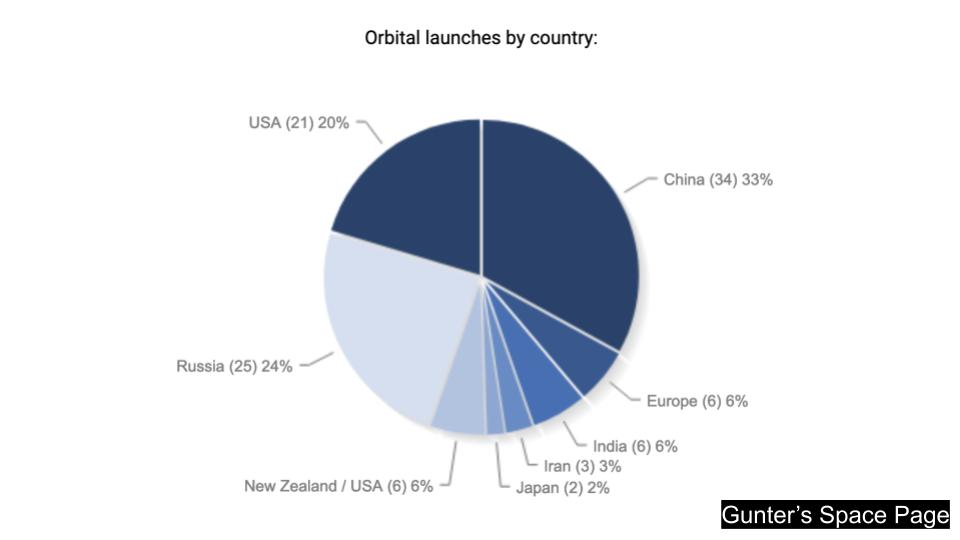
There were 97 successful rocket launches out of 102 total launches, which gives us a success rate of 95% — not perfect, but not too shabby either!
So, who won the Space Race in 2019? If you guessed China, you’d be correct. According to Gunter Krebs’ careful tally, China has launched 34 rockets. Space enthusiasts on Wikipedia agree with this number. (And yes, I know, I shouldn’t use Wikipedia as a first source but there’s just so much to keep track of!)
Now, depending on how you tally up launches, who comes in second and third can vary.
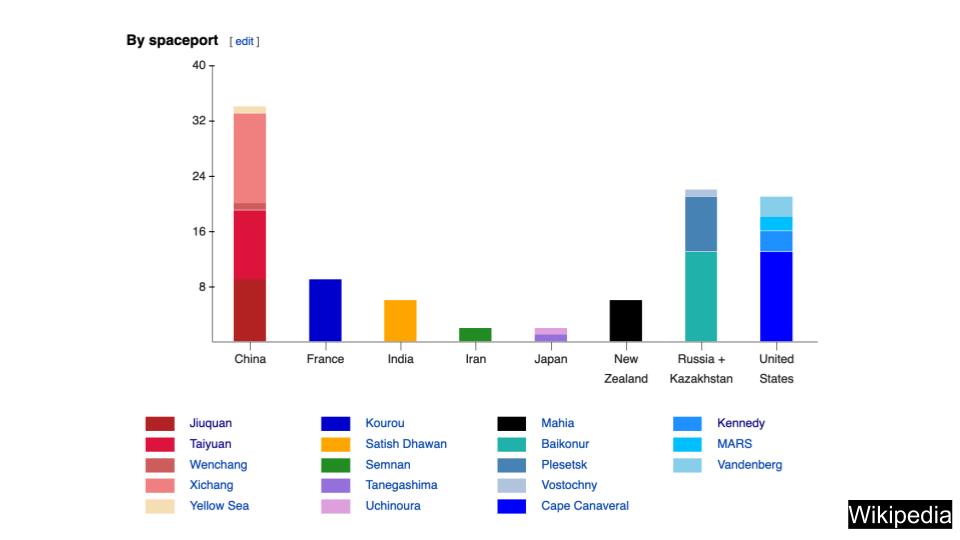
If you go by spaceport, China is still in the lead. Russia comes in second place with 22 launches, followed by the US with 21 launches.
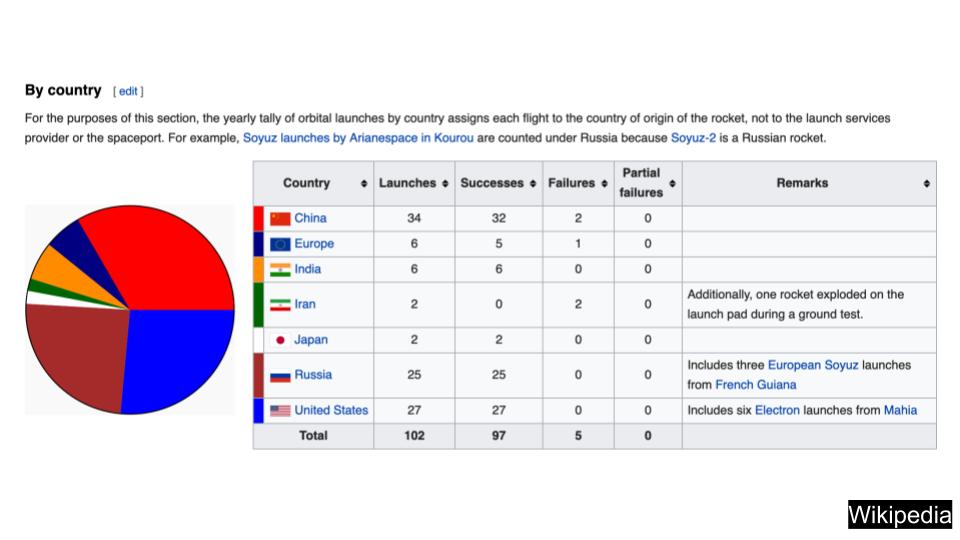
But wait!! If you tally everything up by the rocket’s country of origin, the numbers change! RocketLab’s Electron rockets are manufactured in the US, so those 6 rocket launches get added to update America’s total to 27 and boost them to second place. And those Soyuz rockets that Arianespace launches from Kourou? Those are manufactured in Russia, so Russia’s tally gets a small boost to 25.
Orbital Launches of 2019 (Gunter’s Space Page)
2019 in Spaceflight (Wikipedia)

Now, for the largest and smallest rockets of 2019! Weighing in at a massive 1,420,788 kg, SpaceX’s Falcon Heavy was the heaviest rocket launched last year. To put that number in perspective a bit, that’s 237 male African elephants.
The smallest orbital rocket launched last year was RocketLab’s Electron with a mass of 13,000 kg. In case you’re curious, that’s just over the combined mass of 2 male African elephants.
If you were to put the two rockets side by side, the Electron would be dwarfed by the Falcon Heavy. The Electron is 17 meters tall which makes it not quite a fourth of the height of the 70 meter tall Falcon Heavy.
- Falcon Heavy (SpaceX)
- Electron Payload User’s Guide (PDF, RocketLab)
- Electron (RocketLab)
- How much does an elephant weigh? (Elephant World)
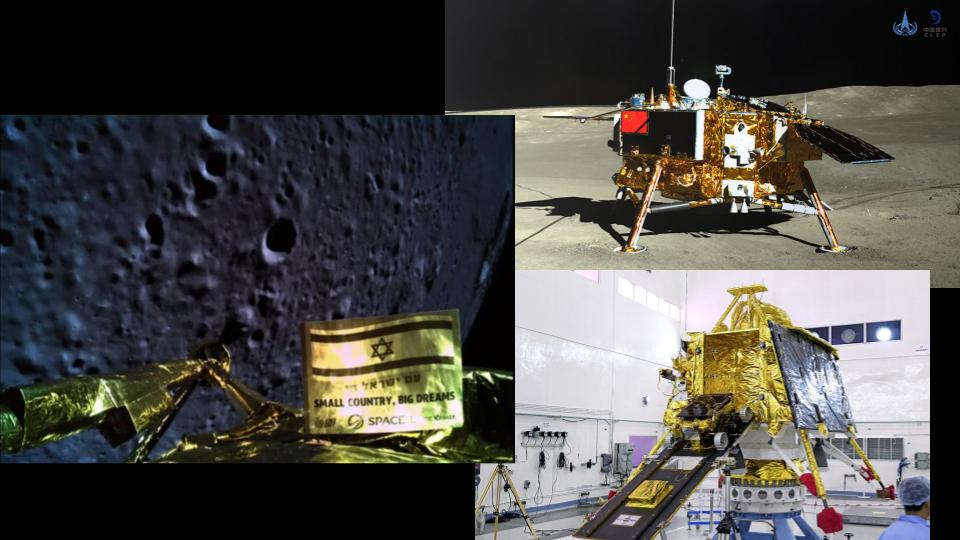
There were three lunar attempts last year, one each by China, India, and SpaceIL. Unfortunately, only the Chinese lander had a successful soft landing. SpaceIL’s Beresheet and India’s Vikraam lander both crashed into the lunar surface.
It’s not bad: Chandrayaan-2 continues to orbit the Moon, collecting data for India’s space program.
- Chang’e 4 mission a complete success (in Chinese, CNSA)
- Gallery (SpaceIL)
- SpaceIL says “chain of events” led to crash of lunar lander (SpaceNews)
- Chandrayaan-2 Gallery (ISRO)
- Chandrayaan-2 Latest Updates (ISRO)
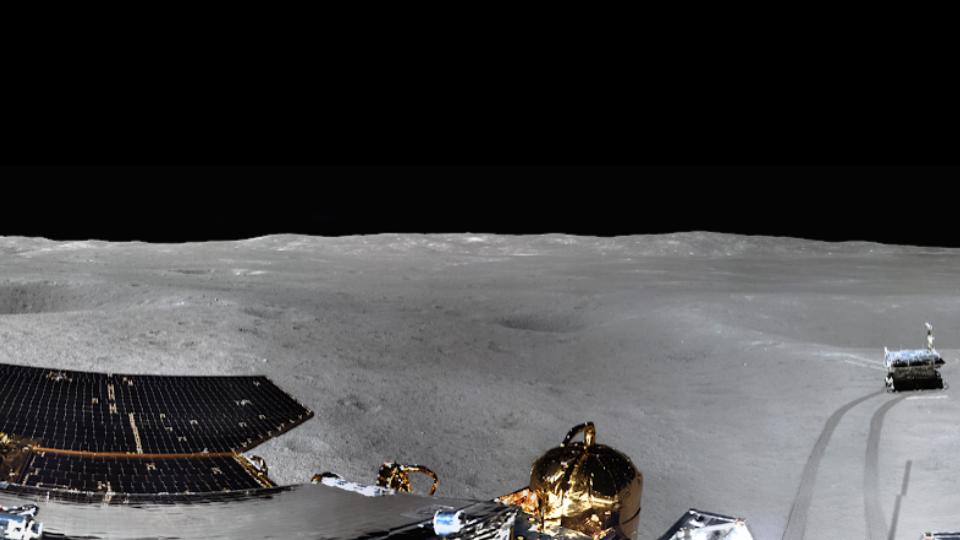
And the Chang’e lander and rover Yutu-2 are doing science of their own. The Chinese lander took the first panorama from the far side of the moon after it touched down last year.
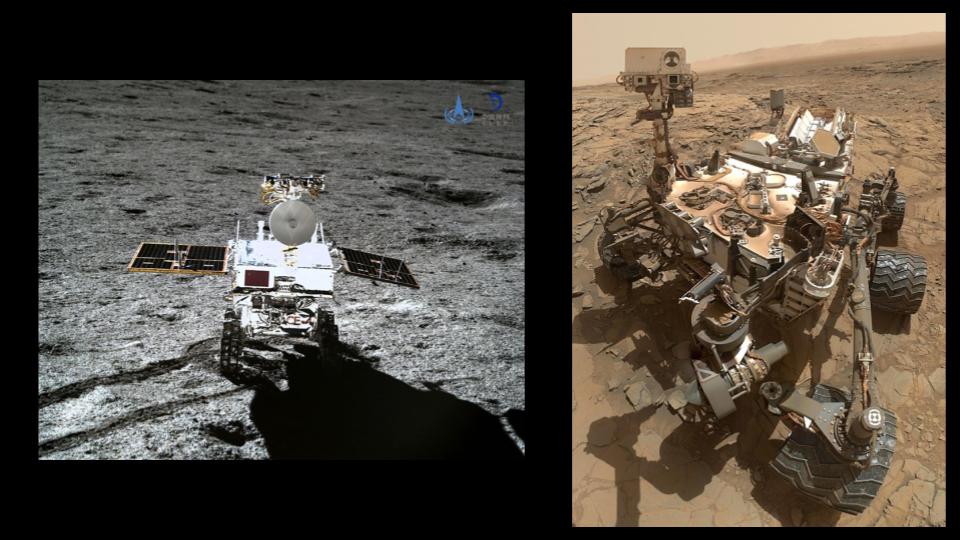
Speaking of rovers, there were two wheeled rovers exploring other worlds last year: NASA’s Curiosity and China’s Yutu-2. Together, they covered just over 2 kilometers of alien terrain. Curiosity traveled 1.71 kilometers on Mars and Yutu-2 traveled a bit more than 357 meters during its year on the lunar surface.
Even though it hasn’t covered a lot of ground, Yutu-2 belongs in the “little rover that could” club. It is now the longest-lived lunar rover with a mission duration of over a year. Previously, the Russian Lunokhod 1 rover held the record at 321 days of operation on the lunar surface.
- Lunokhod 1: 1st Successful Lunar Rover (Space.com)
- Pioneer on the back of the moon-the first anniversary of Chang’e 4 landing on the back of the moon (in Chinese from China’s Lunar and Deep Space Exploration Program)
- PIA19920: Curiosity Self-Portrait at ‘Big Sky’ Drilling Site (Photojournal, JPL)
- Curiosity Rover’s Location for Sol 2297 (NASA Mars Exploration Program)
- Curiosity Rover’s Location for Sol 2616 (NASA Mars Exploration Program)
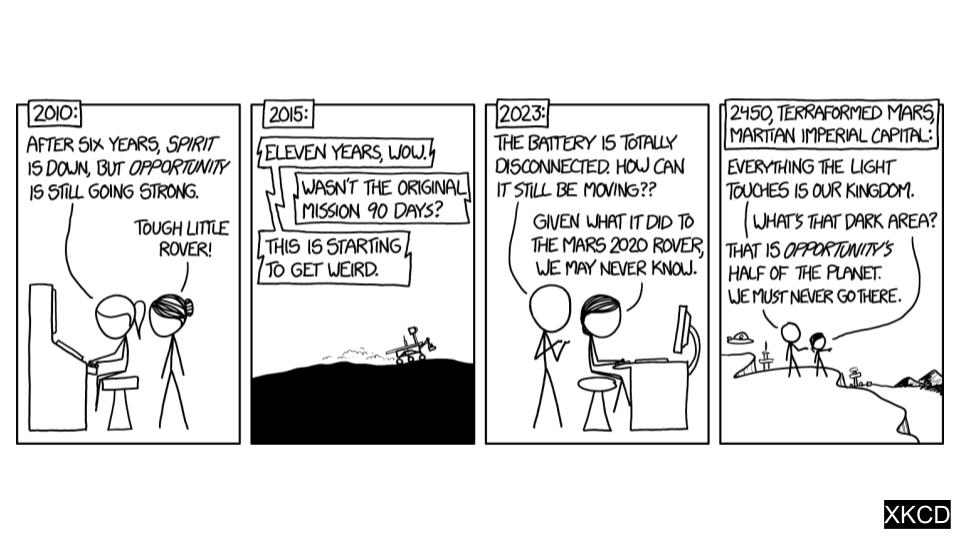
And finally, a moment to recognize some of the spacecraft missions that ended this year.
In no particular order:
Thank you all for listening. The Daily Space is produced by Susie Murph, and is a product of the Planetary Science Institute, a 501(c)3 non profit dedicated to exploring our Solar System and beyond. We are here thanks to the generous contributions of people like you. Want to become a supporter of the show? Check us out at Patreon.com/cosmoquestx
We’ve launched a podcast edition of this show. If you want a 10 minute, chaos-free listen, click over to dailyspace.org and check it out. Find it wherever you get your podcasts!
Each live episode of the Daily Space is archived on YouTube. If you miss an episode on Twitch.tv, you can find it later on youtube.com/c/cosmoquest. These episodes are edited and produced by Susie Murph.


 We record most shows live, on Twitch. Follow us today to get alerts when we go live.
We record most shows live, on Twitch. Follow us today to get alerts when we go live.